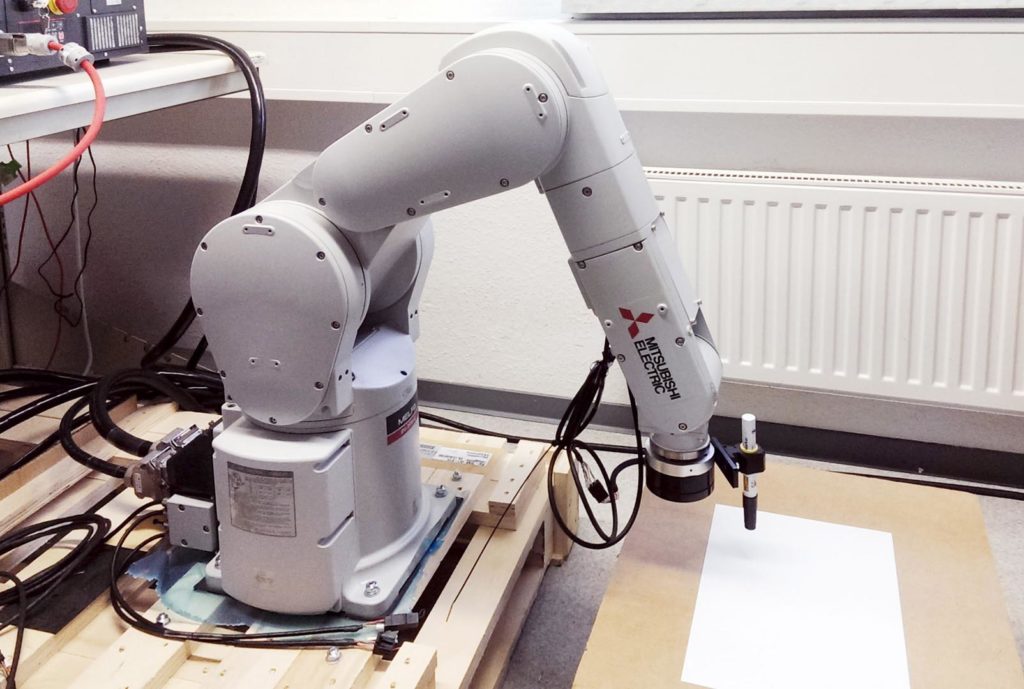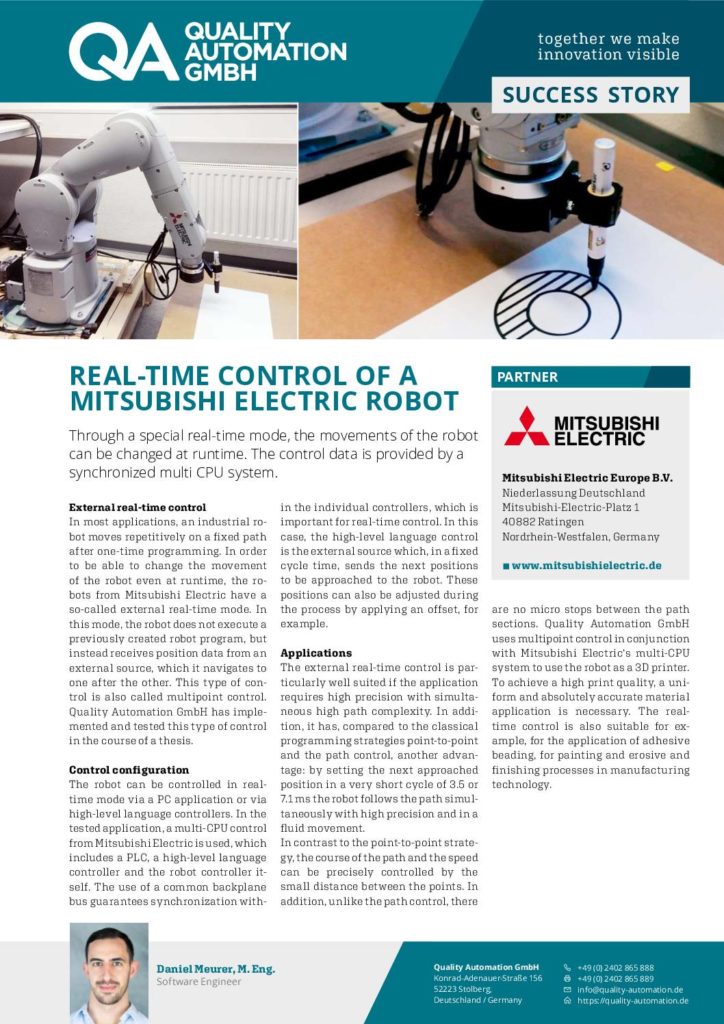External real-time control
In most applications, an industrial robot moves repetitively on a fixed path after one-time programming. In order to be able to change the movement of the robot even at runtime, the robots from Mitsubishi Electric have a so-called external real-time mode. In this mode, the robot does not execute a previously created robot program, but instead receives position data from an external source, which it navigates to one after the other. This type of control is also called multipoint control. Quality Automation GmbH has implemented and tested this type of control in the course of a thesis.
Control configuration
The robot can be controlled in real-time mode via a PC application or via high-level language controllers. In the tested application, a multi-CPU control from Mitsubishi Electric is used, which includes a PLC, a high-level language controller and the robot controller itself. The use of a common backplane bus guarantees synchronization within the individual controllers, which is important for real-time control. In this case, the high-level language control is the external source which, in a fixed cycle time, sends the next positions to be approached to the robot. These positions can also be adjusted during the process by applying an offset, for example.
Applications
The external real-time control is particularly well suited if the application requires high precision with simultaneous high path complexity. In addition, it has, compared to the classical programming strategies point-to-point and the path control, another advantage: by setting the next approached position in a very short cycle of 3.5 or 7.1 ms the robot follows the path simultaneously with high precision and in a fluid movement.
In contrast to the point-to-point strategy, the course of the path and the speed can be precisely controlled by the small distance between the points. In addition, unlike the path control, there are no micro stops between the path sections. Quality Automation GmbH uses multipoint control in conjunction with Mitsubishi Electric‘s multi-CPU system to use the robot as a 3D printer. To achieve a high print quality, a uniform and absolutely accurate material application is necessary. The real-time control is also suitable for example, for the application of adhesive beading, for painting and erosive and finishing processes in manufacturing technology.


